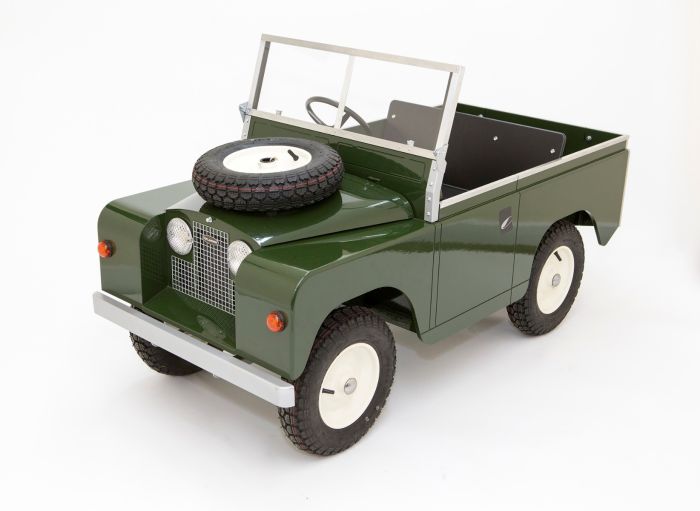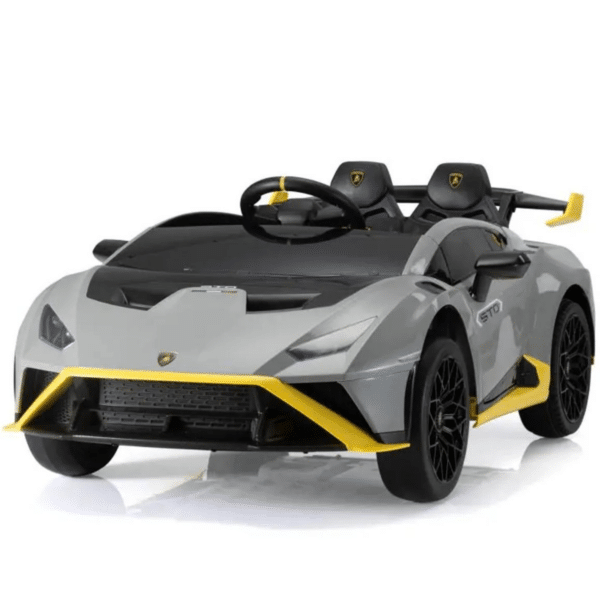Best Suggestions For Choosing Kids Cars
Wiki Article
What Should You Consider When Choosing A Ride-On Vehicle To Take A Toddler Or Older Child?
To ensure the safety, security, and enjoyment of a child's ride-on vehicle, you should consider their height, age and developmental stage. Here are some things to take into consideration:
Younger Toddlers (1 to 3 years old): Look for ride-on vehicles specially created for children of this age. They usually have an upright and low-to-the-ground style as well as easy-to-use controls. simple features such as steering wheels, buttons, or levers. Ride-on vehicles with broad bases will offer stability and decrease the chance of them tipping.
Children over 3 years old As they get older children, they are able to handle ride-ons using more sophisticated functions and control. Look for cars with seats that can be adjusted as well as larger capacities for weight. Also look for features that are interactive, including working lights, sounds and music. To ensure your safety, look for cars that have an variable speeds or parental controls to meet the needs of different skill levels.
Size
Height and Weight Consider your child's height and weight into account when choosing a ride-on vehicle. Select a car whose seat height and weight are suitable for your child. Avoid cars that are too big or small, since they could cause discomfort or make it unsafe for your child to travel in.
Comfort and Legroom - Ensure that your child has plenty of space to be seated comfortably in the car. Make sure you check the dimensions of the car and ensure that it is suitable for your child's.
Developmental Stage
Motor Skills: When choosing a ride-on vehicle make sure you consider your child's coordination skills and their motor skills. Older children may have the ability to utilize more sophisticated features and controls while toddlers younger than them may require a simpler control.
Independence and Confidence- Ride-on vehicles can build confidence and independence for children by teaching them to manage their car and navigate. Pick a car that will allow your child to learn how to steer, accelerate, and brake on their own. This will increase their confidence and motor skills in the course of time.
Take into consideration your child's curiosity and engagement when choosing the right ride-on car. Pick a car that has specific features, themes or colors that appeal for your child. It might be a classic sporty vehicle or truck.
Take into consideration your child's size and stage of development to pick a car that is secure, comfortable and enjoyable. This will offer many hours of fun and learning for your child while they play and explore. Follow the top electric kids cars for blog info including digger ride, 2 seater electric cars, kiddies cars, toy car toy car, kidscars, toy ride, car toy toy, toy car toy car, kiddies cars, kids electric cars and more. .

What Assembly And Maintenance Are Required For A Child's Car Ride-On?
Kids' ride-on cars usually require periodic maintenance and assembly to ensure their performance is optimal as well as safety and longevity. These are some of the most commonly used assembly and care requirements for children's ride-on cars.
Most ride-on vehicles are assembled, and will require assembly. It usually involves attaching parts such as wheels and steering wheel, seats, and other accessories in accordance with the specifications of the manufacturer.
Assemble the components according to the directions. In accordance with the directions, complete the assembly using the equipment and tools provided.
Cleaning -
The ride-on cars should be maintained regularly to ensure that they appear good and perform correctly. Wipe down the exterior surfaces using the help of a soft, damp sponge or cloth that has been soaked in mild soapy water. This removes dirt, dust and other particles.
Be particularly attentive to areas susceptible to buildup such as undercarriage, tires, and wheels. Make use of a toothbrush or a brush to clean hard-to-reach places and get rid of stubborn dirt.
Avoid harsh chemicals and harsh cleaners, as they can damage coating or the electronic component.
Battery Care
If the ride-on vehicle is powered by a rechargeable battery, taking care of the battery is crucial to ensure performance and extend the life of the battery. Follow these tips to take care of your battery -
Charge your battery completely before and after each usage to ensure you get the best out of it.
Beware of overcharging and not leaving the battery connected to the charger for prolonged periods. This can damage the batteries and reduce their life span.
Keep the ride-on vehicle and battery in a dry, cool area when not being used, away from direct sunlight or extreme temperatures.
If needed clean the terminals using the help of a terminal cleaner or wire brush if they are damaged or corroded.
Replace the battery when it's not charging, or if there are indications of damage.
Tire Maintenance -
Check the tires regularly for indications of wear, damage or loss of air. Inflate the tires to the recommended pressure with the bicycle pump or an air compressor if needed.
Inspect the tread pattern to look for debris or other foreign objects that may cause punctures or flats. Replace the damaged tires and eliminate any obstructions.
Lubricate the wheels, axles, bearings, as well as other components to ensure a smooth rotation.
Repair or replace components as needed -
Ride-on vehicles may require repair or replacement of parts due to wear and tear or damages.
Pay attention to indicators of malfunction and degradation such as unusual noises, loss or power, or erratic behaviors. You can refer to the user manual or call customer support to get help for troubleshooting or repair.
Replace damaged or worn-out components immediately to avoid any further damage, and to ensure the safety and function of the ride-on vehicle.
By following these maintenance and assembly guidelines You can ensure that your kid's ride-on car in great condition and enjoy hours of safe and enjoyable playtime for your child. Check out the best find out more for Mercedes kids car for site examples including ride on digger, kiddies cars, electric ride on, ride of car, toy car toy car, remote control childrens car, childrens ride on, toy with car, toy cars, electric car ride and more. .

What Kind Of Children's Remote-Controlled Cars Are There? What Are The Pros And Cons Of These Cars?
The various sizes, styles price, styles, and models of remote control children's car are available to meet the budget and requirements of all. Below is a list of various types of remote control kids' cars, including their sizes, price ranges, and pros and con.
Electric RC Cars – These are remote-controlled, battery-powered vehicles that can be used both inside and outside. These cars come in a variety of styles like buggies, trucks and sports cars.
Nitro RC Cars – Gas-powered remote controlled cars with greater performance and speed however, more maintenance and expertise is required in order to operate. Electric RC cars are smaller and are less costly.
Scale Models (Remote-controlled replicas) Miniatures of real-life vehicles like cars, trucks or planes. Scale Models can be found in a variety of scales that range from 1-10 to 1-24. Larger scales provide more detail and realistic appearance.
Sizes -
Children's remote-controlled cars are available in various dimensions. The range of sizes ranges from micro-sized replicas to larger-scale models. The size of the vehicle can affect the performance of it and its speed.
Micro-sized car are lightweight and compact. They are ideal for smaller children and indoor use. The larger-scaled cars are more powerful and durable making them ideal for off-road racing and outdoor racing.
Prices
Prices vary based on size, features brand and build quality.
The cost of smaller electric RC vehicles can vary between $20 and $100. However larger-scale electric or Nitro RC models are available between $100 and $500.
Scale models and high-end hobby-grade RC cars range from several hundred dollars up to 1,000 dollars, based on the level of detail and speed.
Pros and Cons
Pros -
Children and adults will enjoy hours of fun and entertainment by controlling their cars via remotes.
Skills Development. Operating a RC car allows children to develop hand-eye-coordination as well as spatial awareness and problem-solving abilities.
Social interaction. You can go on the RC cars with your family and friends and encourages social interaction.
Aftermarket parts, upgrades, accessories and other products from the aftermarket can be used to modify many RC cars and improve their performance.
Cons
Costs - Quality remote control children's cars can be expensive, especially hobby-grade models with advanced features.
Learning Curve: Controlling an RC vehicle requires a lot of practice and skill, and even younger children may struggle with the controls in the beginning.
Maintenance It is important to maintain the vehicle regularly for RC vehicles including cleaning, lubrication, and repairs.
Safety Concerns – RC vehicles pose dangers to safety such as collisions, falls and electrical hazards when they're not used under the supervision of an adult and with the utmost care.
The best remote control children vehicles are ones that provide a stimulating and educational experience to kids of all ages. When selecting the ideal model for your child however, you must take into consideration a variety of factors, such as dimensions, features for price as well as safety. Hobby-grade RCs may be suitable for teenagers and older children, and simpler models can be a good fit for youngsters and children who are just beginning to learn. See the recommended JCB ride on digger kidscars.co.uk info for site recommendations including lambo toy car, childrens digger, ride of car, kidscars, ride on car, lambo toy car, car electric ride on, ride on toy, toy car for car, car on ride and more. .
